15 Most Popular Antique Glassware Styles and Their Origins
Antique glassware possesses a unique charm that lends character to any collection or home. Each style tells a story about the time and place where it was made. Some pieces were once everyday items, while others were meant for display or special occasions. Colors, patterns, and shapes vary widely across styles. Many of these glass pieces were crafted by renowned makers during various periods in history. Learning about their origins can help collectors and enthusiasts understand their value.
This post may contain affiliate links, which helps keep this content free. Please read our disclosure for more info.
Depression Glass
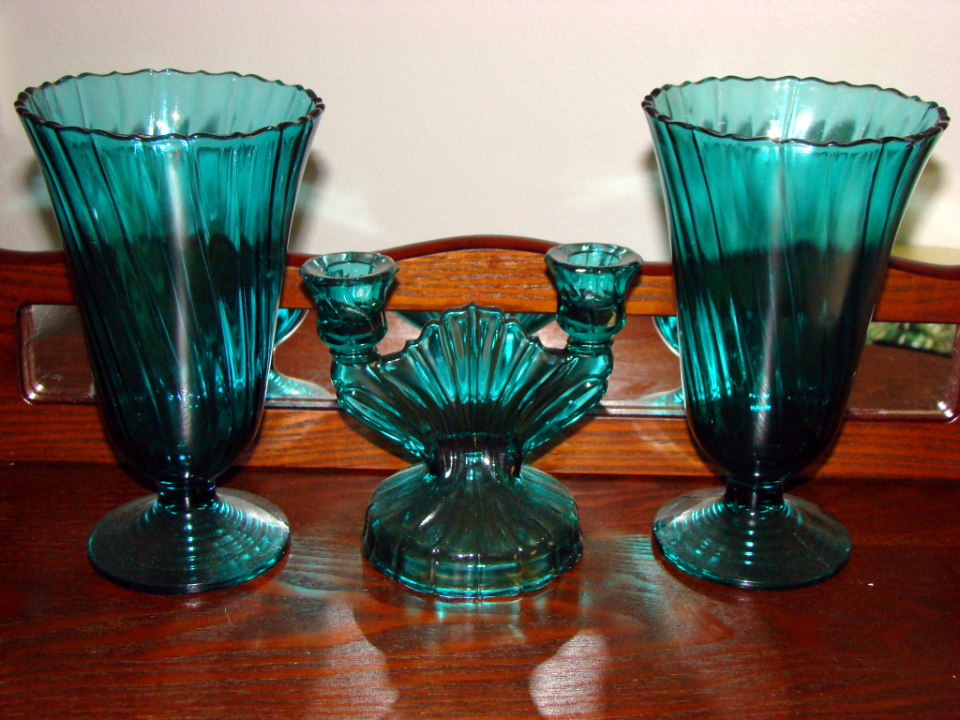
Depression glass was produced in the United States during the 1920s and 1930s, a time when families were dealing with economic hardship. It was often given away with products like cereal or handed out at movie theaters to draw in customers. Companies used molds to stamp patterns into the glass, which helped lower production costs. Despite being inexpensive at the time, it came in many cheerful colors such as pink, green, amber, blue, and even clear. Patterns like “Cherry Blossom,” “Sharon,” and “Princess” became household favorites. Because it was so widely distributed, millions of pieces were made, though not all have survived in good shape. Condition plays a large role in pricing, especially when entire sets are involved.
Collectors now look for rare colors and complete sets to add to their displays. A single tumbler might sell for $20 to $50 depending on color and wear. Plates and serving bowls in harder-to-find patterns can be priced between $75 and $150. Full sets in excellent condition often reach $300 to $700, and even higher if the color is uncommon or the pattern is in high demand. Items in pink, cobalt blue, and uranium green are especially popular with collectors. The appeal of Depression glass lies in its ability to reflect the mood of a difficult time through bright, cheerful designs. It remains one of the most recognizable and accessible types of antique glassware today.
Carnival Glass
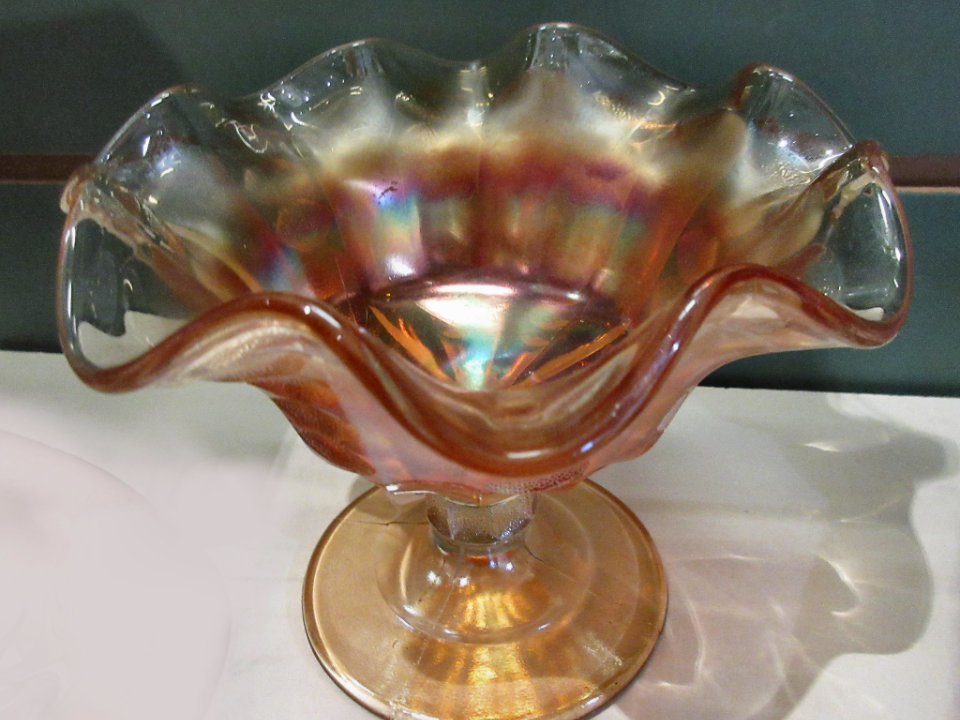
Carnival glass was first made in the early 1900s and quickly became popular for its shiny, rainbow-like surface. This special look was created by spraying metallic salts onto hot glass, which produced an oil-slick appearance that caught the light in different ways. Companies like Fenton, Northwood, and Imperial led the way in making this type of glass, offering a wide variety of patterns and colors. Some of the most famous designs include “Peacock Tail,” “Grape and Cable,” and “Good Luck.” Though originally considered low-cost glassware, carnival glass was often used as prizes at fairs or carnivals, which is how it got its name. Despite its humble beginnings, it has become one of the most collected glassware types in the world. The iridescent finish is one of its most prized qualities.
Collectors pay attention to color, pattern, and condition when buying carnival glass. Common colors like marigold are more affordable, often selling between $30 and $100 for bowls, plates, or vases. Scarcer colors such as purple, aqua, or red can sell for $200 to $600. Extremely rare patterns or pieces in excellent shape can go beyond $1,000, especially if they are signed or come from a well-known maker. The condition of the finish is critical, as wear and scratches can lower the value significantly. Carnival glass continues to draw interest due to its glowing finish, wide availability, and variety of forms. Many collectors aim to build sets in matching colors or track down rare one-off pieces.
Vaseline Glass
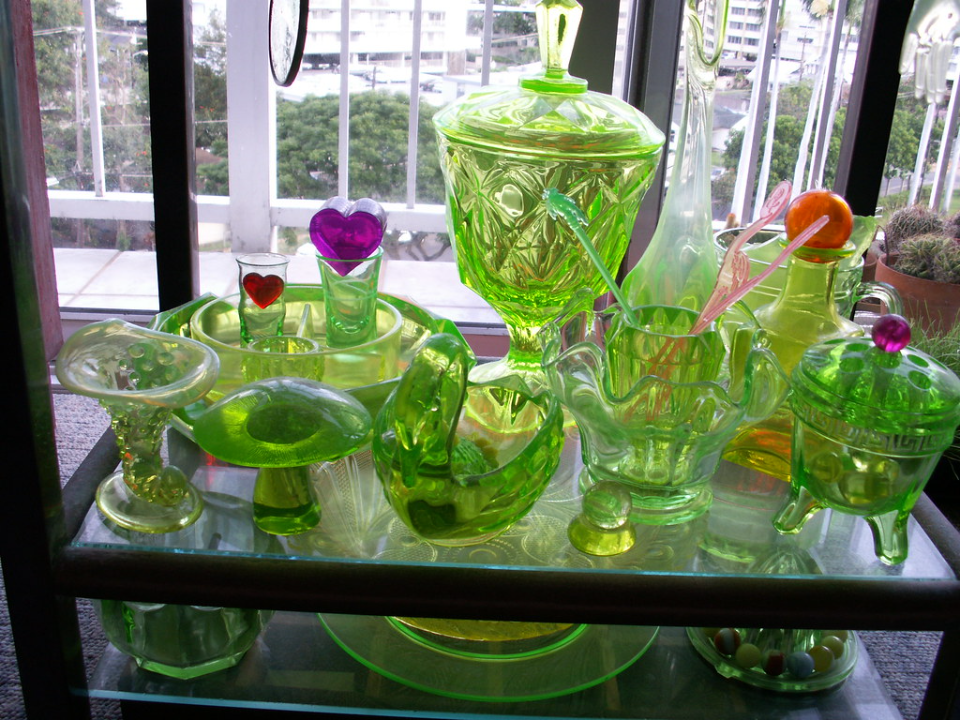
Vaseline glass is easy to recognize due to its yellow-green tint and glow under ultraviolet light. The glow comes from uranium oxide, which was used in the glass mixture. This type of glass was first made in the mid-1800s and remained in production into the early 20th century. Common forms include vases, dishes, candlesticks, and salt cellars. Though it contains uranium, the levels are very low and considered safe to handle. Pieces with rich color and strong glow are often preferred by collectors. Some items also include pressed or cut designs for added visual appeal.
Prices depend on age, color strength, and condition. Small dishes and basic shapes might be priced between $40 and $100. More decorative forms such as lamps or items with metal attachments can range from $150 to $300. Extremely rare patterns or early examples may reach $500 or more. Collectors often use blacklight when shopping for Vaseline glass to check its authenticity. It remains a favorite for those who enjoy both the look and the novelty of glowing glass. Due to its unique appearance, it tends to stand out in any glassware collection.
Cut Glass
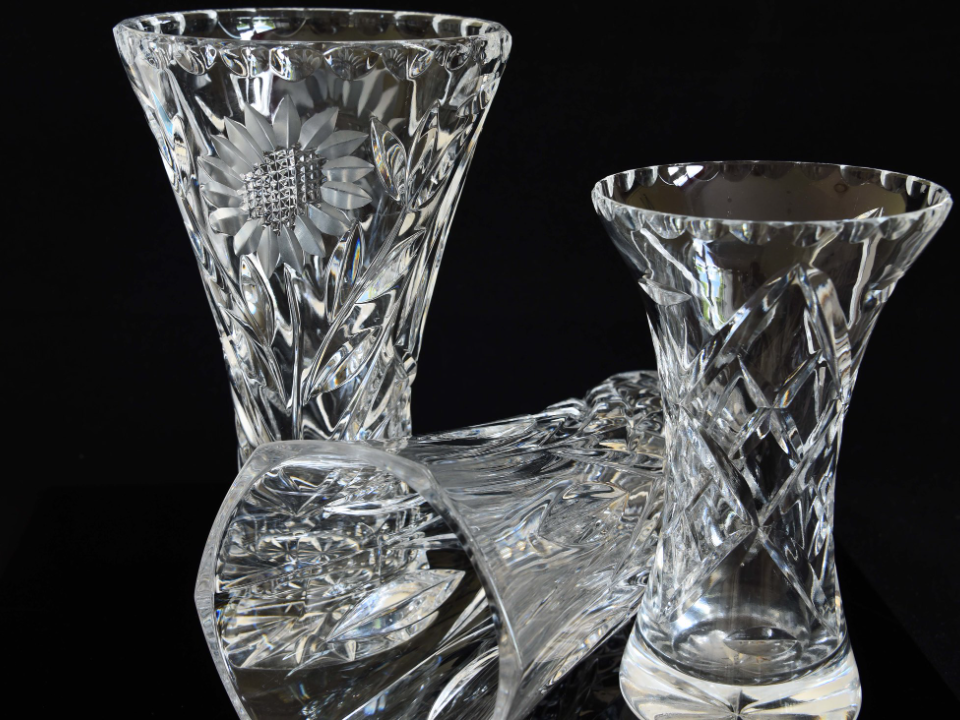
Cut glass became highly prized during the American Brilliant Period from 1876 to 1917. This style involves hand-cut designs that reflect light in beautiful ways, often making the glass sparkle. The process was time-consuming and required great skill, so pieces from this period were usually expensive at the time. Common items include bowls, pitchers, compotes, decanters, and perfume bottles. Patterns often feature stars, fans, hobstars, and diamonds. Because the designs were made by hand, each piece has a unique quality. Many items were used during formal dinners or as centerpieces in fine homes.
Today, cut glass is valued based on the clarity of the glass, the sharpness of the cuts, and whether it is signed by the maker. Smaller pieces may range from $100 to $250. Larger items such as punch bowls or large vases can bring in $500 to $1,200 or more. If the piece has a maker’s mark like Hawkes or Libbey and is in excellent condition, the price may go even higher. Some collectors focus on assembling sets with matching patterns, while others collect individual standout pieces. Though heavier and more fragile, cut glass remains one of the most admired types of antique glassware.
Opalescent Glass
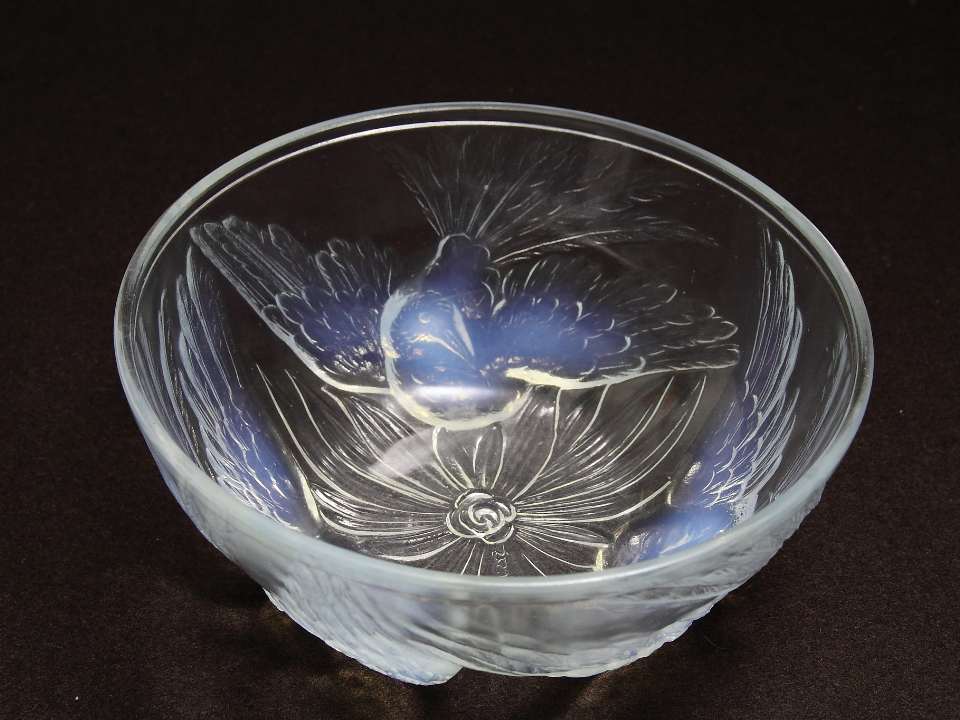
Opalescent glass has a soft, milky white glow that appears in parts of the item, often blending into a colored base. This effect is created by reheating certain areas of the glass during production. The style became popular in the late 19th century and continued into the early 20th century. Companies like Northwood, Jefferson, and Fenton produced a wide range of pieces such as bowls, pitchers, and vases. Colors include blue, cranberry, green, and clear, each giving a different visual effect. The soft white glow usually appears along the rim or around raised patterns. This makes each piece stand out, especially when placed near a light source.
Collectors look for strong contrast between the white and the base color, as well as well-formed shapes and undamaged edges. Smaller bowls and dishes can be found for $50 to $150 depending on the color and maker. Rarer patterns or colors such as cranberry and aqua may reach $250 to $600. Condition is important, as chips or dull spots can greatly reduce value. Opalescent glass is popular for its gentle beauty and often adds charm to both vintage and modern displays. It is often passed down through families as a treasured keepsake.
Pressed Glass
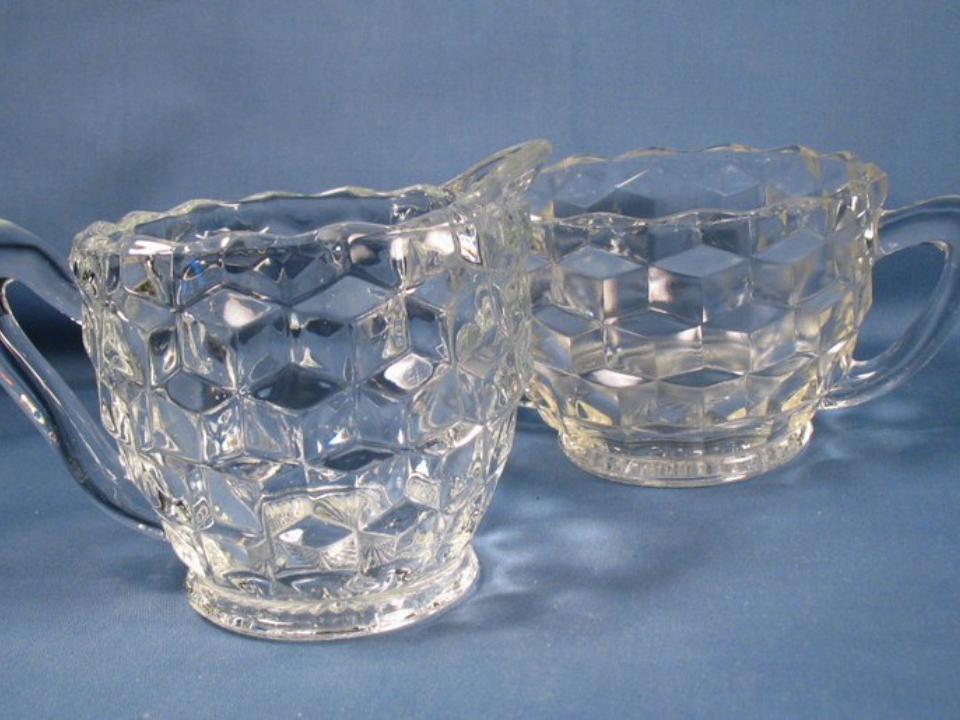
Pressed glass became popular in the early 1800s as a more affordable alternative to cut glass. It is made by pouring molten glass into a mold and pressing it into shape with a plunger. This allowed for detailed patterns without the cost or time needed for hand cutting. Items included everyday goods like sugar bowls, tumblers, serving dishes, and butter pats. Patterns often featured flowers, geometric shapes, or shell motifs. While it was widely produced, certain makers and designs became highly recognizable. Pressed glass was often used in Victorian homes for both casual and formal settings.
Although many pieces are common, rare patterns or unusual shapes can attract higher prices. Basic pieces may sell for $20 to $60. More elaborate examples or early American pressed glass can go for $150 to $400 depending on condition and demand. Some collectors enjoy finding entire table settings in matching patterns. Others look for unique pieces like pedestal cake stands or oil lamps. Pressed glass remains a popular choice due to its variety and availability in the antique market.
Cobalt Blue Glass
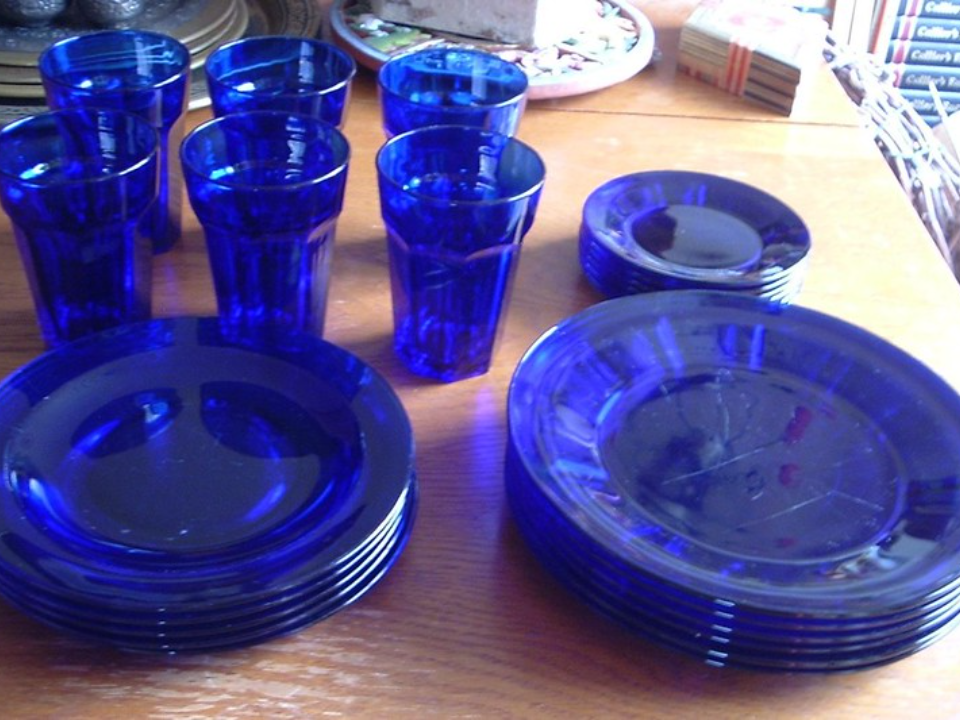
Cobalt blue glass stands out with its rich, deep blue color made using cobalt oxide. The color has been used in glassmaking for centuries, dating back to ancient Egypt, though the style became especially popular in the 1800s and early 1900s. Cobalt blue was used for medicine bottles, vases, drinking glasses, and decorative items. The bold color makes it easy to spot on shelves or in cabinets. Some items were purely decorative while others had a functional use. Companies like Hazel-Atlas and Anchor Hocking produced many household items in this striking shade.
Collectors enjoy the vivid tone and often focus on assembling sets of blue glassware. Simple drinking glasses can range from $15 to $40. Larger items such as pitchers or mixing bowls may fetch between $75 and $200. Rare shapes or items with unique etchings or raised patterns can go for $300 or more. Cobalt blue glass continues to be a favorite for both beginning and advanced collectors. Its bold color makes it a strong focal point in any collection.
Jadeite Glass
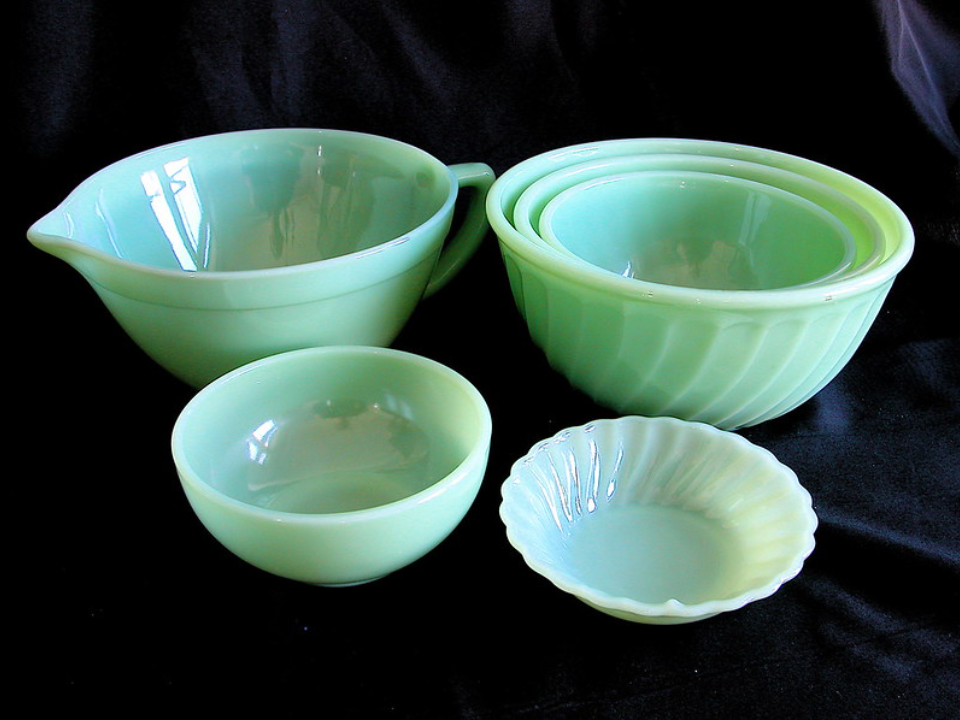
Jadeite glass is known for its soft green, milky color and solid, opaque appearance. It was first introduced in the early 20th century and became especially popular in the 1930s and 1940s. Companies like Fire-King, McKee, and Jeannette produced mixing bowls, mugs, measuring cups, and dinnerware. It was originally made as an affordable and practical choice for American households. The glass is sturdy and has a pleasant, vintage look that continues to attract collectors. Some pieces were made with smooth finishes, while others featured ribbed or swirl designs. Its distinctive green tone often stands out in antique shops and flea markets.
The value of jadeite glass depends on the maker, condition, and shape. Smaller items like cups and saucers usually sell for $25 to $75. Mixing bowls, canisters, or cake stands can range from $100 to $300. Rare items or those marked with company stamps like “Fire-King” may be worth $400 or more. Complete sets in excellent condition can bring in several hundred dollars. Many people enjoy displaying jadeite glass in open kitchen shelves or glass-front cabinets because of its cheerful color and nostalgic appeal.
Cranberry Glass
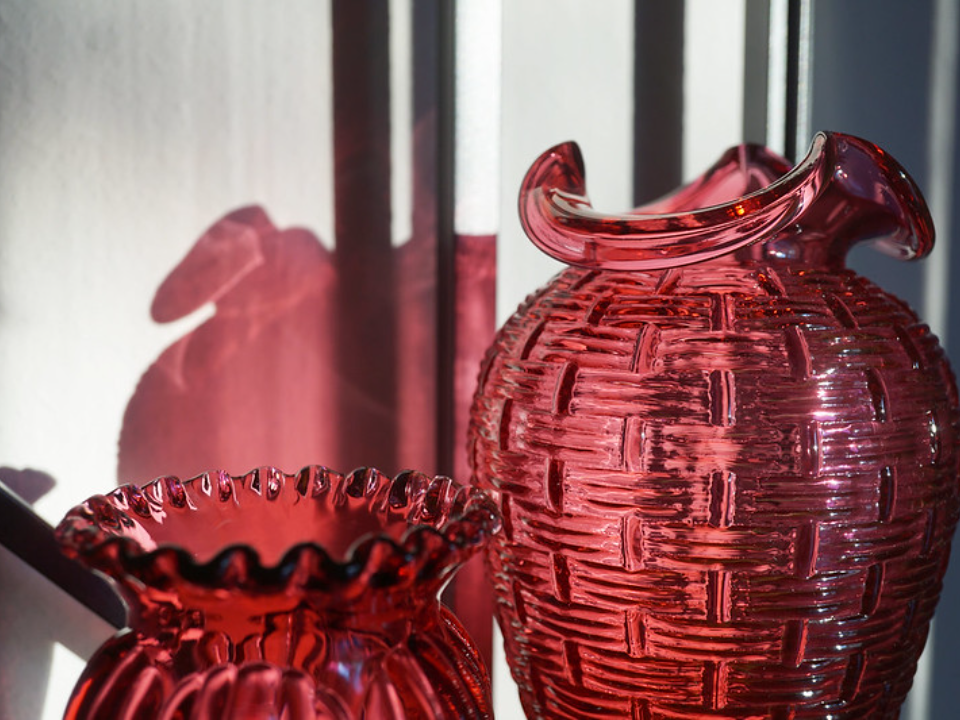
Cranberry glass has a deep pink to red color that is created by adding gold chloride to molten glass. This process dates back to the 17th century in Europe, but the style became widely known in the Victorian era. It was especially popular for fine tableware and decorative pieces such as vases, decanters, and stemware. The color is rich and warm, often used in formal dining settings or as ornamental glass. Some pieces have clear glass handles or bases to create contrast. The process of making cranberry glass was labor-intensive, which made it more expensive and less common at the time.
Today, cranberry glass is considered elegant and collectible. Small pieces like tumblers or candy dishes typically sell for $40 to $100. More decorative items such as large vases or pitchers can bring in $200 to $500. Hand-blown or antique examples may reach $600 or more depending on the maker and condition. The rich color and history behind cranberry glass continue to make it a favorite among collectors. It adds a touch of warmth and beauty to any glassware display.
Black Amethyst Glass
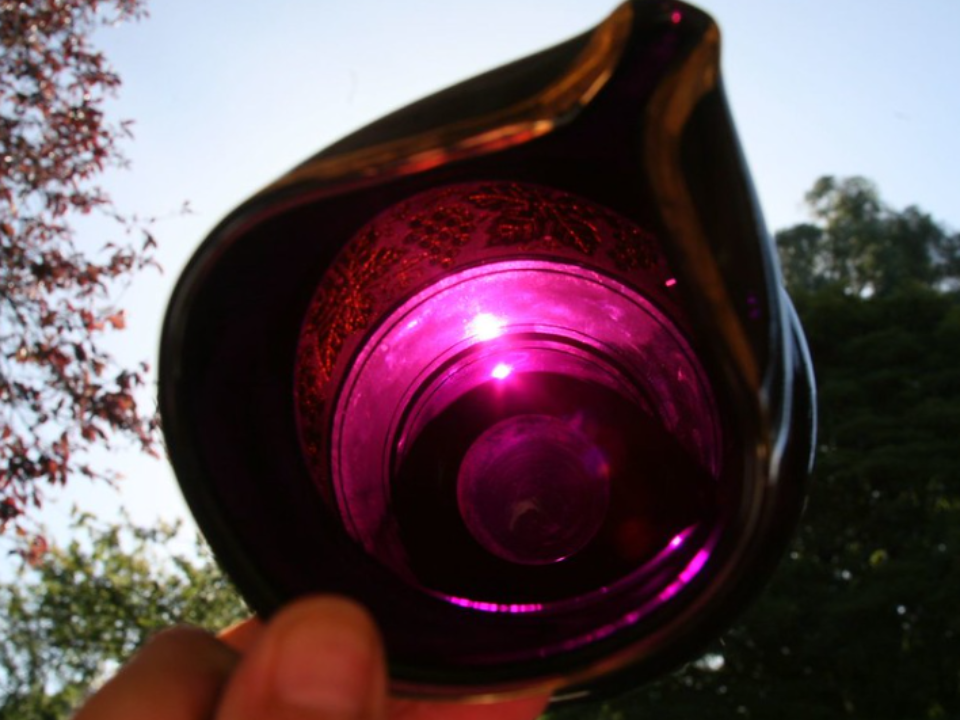
Black amethyst glass looks almost black under regular light but reveals a deep purple shade when held up to strong light. This style was popular during the early 20th century and used for both decorative and functional pieces. Items like vases, candlesticks, and compotes were commonly made in this glass. While it might seem plain at first glance, its hidden color gives it an added charm. Makers like L.E. Smith and Westmoreland Glass Company produced a variety of forms in this glass. Some pieces have raised patterns, floral etchings, or beaded rims.
Collectors look for rich color, clean lines, and undamaged surfaces. Smaller decorative items usually sell for $30 to $80. More elaborate pieces such as pedestal bowls or handled vases can go for $100 to $250. Rarer shapes or pieces with original labels may be priced even higher. The hidden color adds a surprise element, which makes black amethyst glass an interesting addition to many collections. It often pairs well with lighter-colored glassware in display cabinets.
Heisey Glass
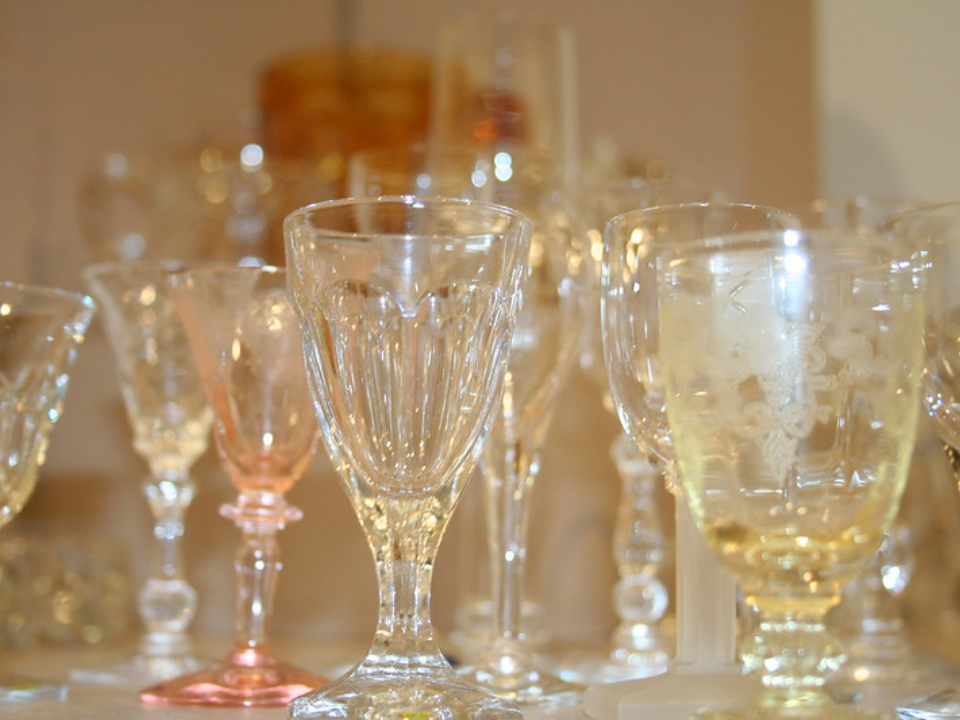
Heisey glass was produced by the Heisey Company in Ohio from 1896 to 1957. It is known for its clear and elegant look, often made in pressed or cut styles with a high-quality finish. Some patterns are simple and refined, while others feature etching or detailed carving. The company used a distinct H-in-a-diamond trademark on most of its glass, which helps with identification. Heisey made both clear and colored glass, including shades like Sahara yellow, Flamingo pink, and Moongleam green. It was commonly used for formal dining items like goblets, serving trays, and decanters.
Prices vary widely depending on the pattern and piece. Simple items like sherbet cups or sugar bowls might sell for $25 to $75. Serving dishes or glass candleholders can go for $100 to $300. Sets of goblets, punch bowls, or rarer colors may reach $500 or more. Collectors value Heisey glass for its timeless design and the quality of its finish. It is a staple in many antique glass collections, especially among those who enjoy tableware from the early to mid-20th century.
Fostoria Glass
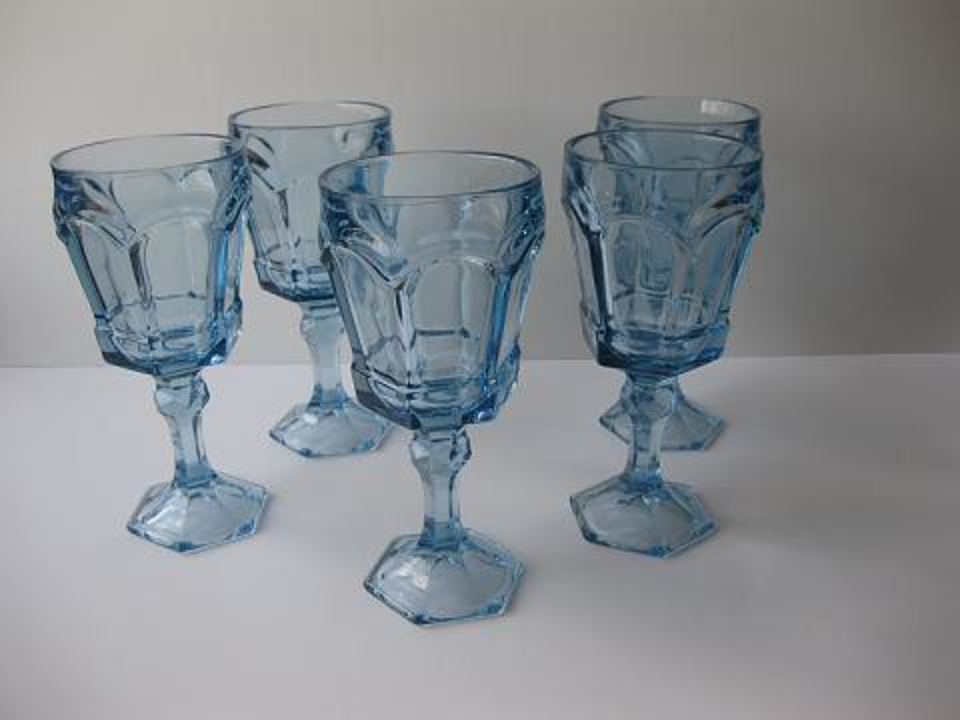
Fostoria Glass Company operated from 1887 to 1986 and became known for its elegant glassware often used in formal settings. One of its most famous patterns, “American,” features a cube-like design that reflects light in all directions. Fostoria also produced etched patterns and delicate stemware for weddings, anniversaries, and fine dining. The company offered a wide range of colors such as amber, pink, and blue. Items included candlesticks, serving bowls, water goblets, and full place settings. Their glass was well-made and widely distributed, which makes it easier to find today.
The cube-style “American” pattern is especially collectible, with pieces like tumblers selling for $15 to $50. Serving dishes, pitchers, or punch bowl sets from the same pattern may range from $75 to $300. Etched glass pieces, particularly those from limited production years, can reach prices of $400 or more. Fostoria remains a favorite among collectors who enjoy setting vintage-themed tables or preserving elegant glassware from the past. The designs still feel classic and work well in both traditional and modern displays.
Hobnail Glass
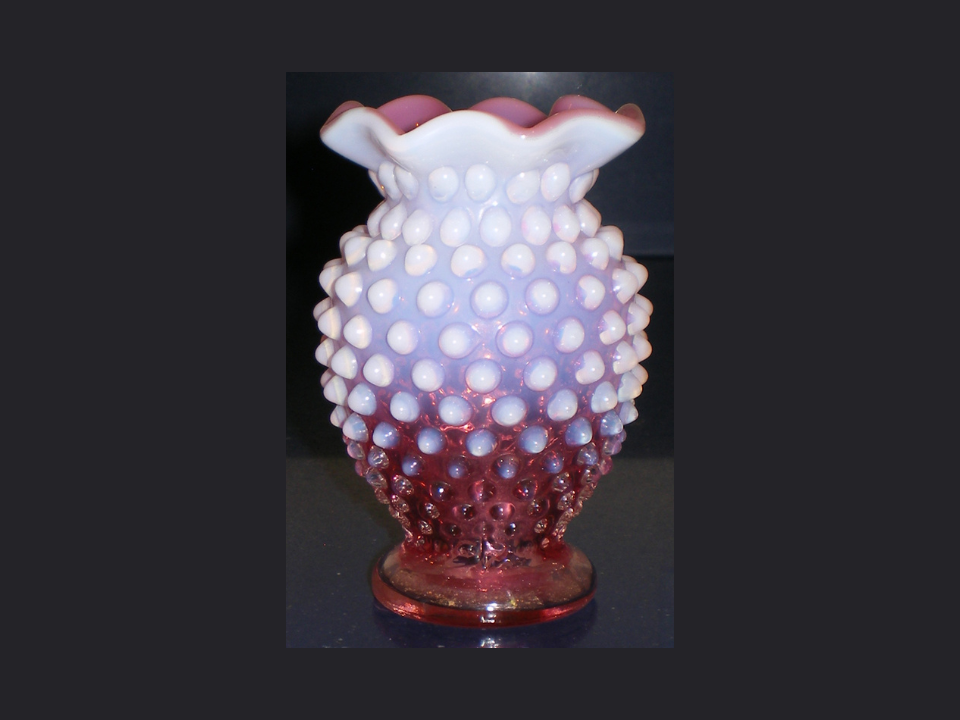
Hobnail glass features raised bumps across the surface, giving it a textured and eye-catching appearance. The pattern was produced in various colors and became especially popular during the 1930s and 1940s. Fenton Glass Company is one of the best-known producers of hobnail glass, offering pieces in milk glass, blue, pink, green, and other shades. Common forms include vases, pitchers, compotes, and lampshades. The texture makes each piece stand out and adds a tactile element that many people enjoy. This style often mixes functionality with beauty.
Smaller hobnail vases and bowls usually sell for $25 to $75. Larger pieces or those in less common colors may range from $100 to $250. Milk glass hobnail is especially popular, and full sets or rare pieces can fetch up to $400 or more. Condition, color, and maker marks all influence value. Hobnail glass continues to be a favorite among collectors who enjoy vintage decor, and it works well in both modern and traditional homes.
EAPG (Early American Pattern Glass)
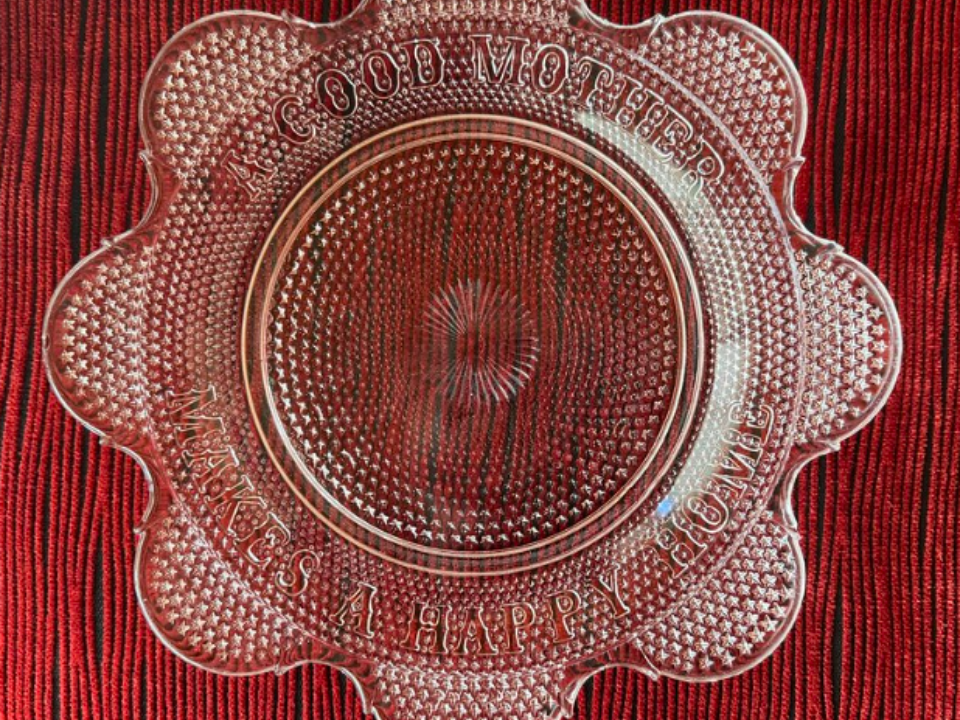
Early American Pattern Glass, often called EAPG, refers to pressed glass made in the United States between 1850 and 1910. These pieces feature geometric and floral designs that were pressed into the glass using molds. EAPG was mass-produced and used in everyday settings, making it common in Victorian households. More than 3,000 patterns were created, and many were named after famous people, places, or themes of the time. Typical forms include goblets, serving bowls, oil lamps, and butter dishes. Some pieces have colored accents or gold trim.
Because EAPG was produced in such large quantities, prices vary widely. Basic pieces can be found for $20 to $60, while rarer patterns may go for $100 to $300. Covered items, such as cheese domes or lidded butter dishes, often sell for even more, especially in pristine condition. Some collectors specialize in one pattern or focus on a particular type of object, like sugar bowls or celery vases. EAPG holds historical value and remains a key category in antique glass collecting.
Stretch Glass

Stretch glass was introduced in the early 1900s and is known for its soft, satiny finish. This finish is created by reheating the glass after forming, which causes it to stretch and develop fine surface lines. Companies like Northwood, Fenton, and Imperial produced stretch glass in a wide range of colors, including green, marigold, blue, and amethyst. It was used mostly for decorative pieces such as candlesticks, bowls, and vases. The finish gives each item a muted glow, which differs from the shiny look of carnival glass. Stretch glass has a unique texture that makes it appealing to many collectors.
Small dishes and candleholders typically sell for $30 to $75. Larger pieces such as console bowls or tall vases can range from $100 to $300 depending on color and condition. Rarer colors like celeste blue or Persian pearl may bring in $400 or more. Stretch glass is often collected for its artistic quality and soft finish. It looks especially attractive when displayed with other muted or frosted glassware.
This article originally appeared on Avocadu.
